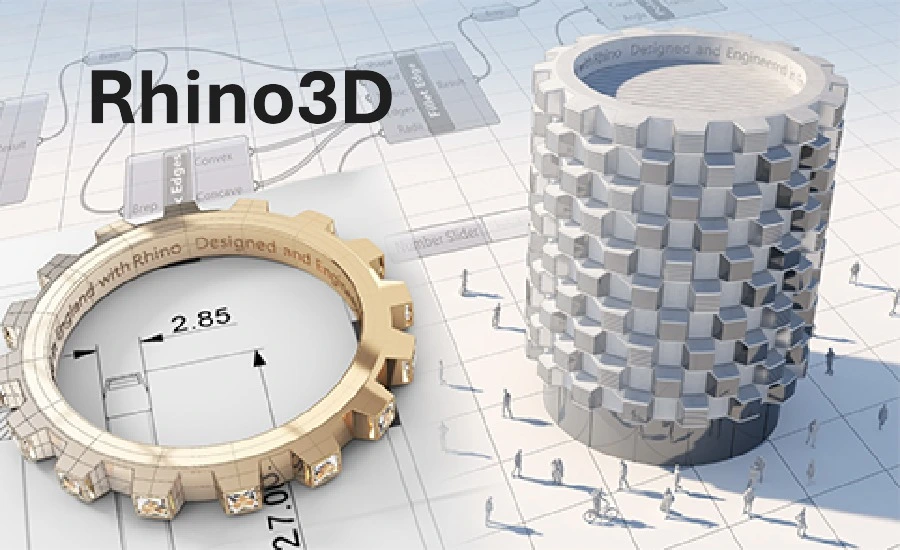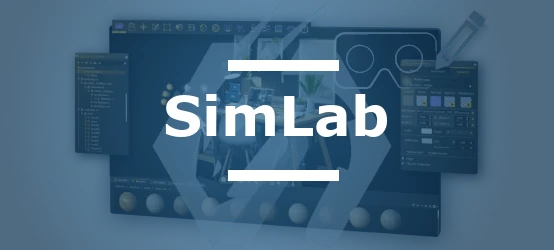
Table of Contents
- Geometric Engine and Technological Base
- Supported Import and Export Formats
- Interoperability with Revit and BIM Tools
- Collaborative Features
- Interoperability with Other Design Tools
- Mesh Tools and 3D Capture
- Solutions Distributed by CAD Interop
- Best Practices for Exchanging Rhino Models
- Conclusion
Rhinoceros (Rhino) has established itself as a versatile 3D modeling tool in architecture, industrial design, and manufacturing sectors. Its ability to efficiently process complex geometries while maintaining compatibility with numerous formats makes it an essential link in modern digital production chains.
Geometric Engine and Technological Base
Rhino relies on a proprietary NURBS (Non-Uniform Rational B-Splines) geometric engine called openNURBS™, which provides great precision in representing complex curves and surfaces. This technology offers several advantages for interoperability:
- Exact mathematical representation of geometries
- Preservation of quality when transferring to other CAD systems
- Ability to model both organic and technical forms
- Efficient management of tolerances for manufacturing
Rhino models can simultaneously contain NURBS surfaces, solids, meshes, and point clouds, simplifying workflow between different disciplines.
Supported Import and Export Formats
Rhino supports a wide range of formats, facilitating data exchange with other CAD systems. Here are the main formats organized by category:
Native CAD and Standard Formats
- 3DM (Rhino Native Format)
- STEP (AP203, AP214, AP242)
- IGES (.igs, .iges)
- ACIS (.sat)
- Parasolid (.x_t, .x_b)
- SolidWorks (.sldprt)
- CATIA (.CATPart, .CATProduct)
- Autodesk Inventor (.ipt, .iam)
- NX (.prt)
BIM and Architecture Formats
- IFC (.ifc) via VisualARQ
- DWG/DXF (AutoCAD)
- SKP (SketchUp)
- FBX
Mesh and Animation Formats
- OBJ (.obj)
- STL (.stl)
- 3DS (.3ds)
- COLLADA (.dae)
- glTF
- PLY (.ply)
- VRML (.wrl)
- U3D
Lightweight Exchange Formats
- 3MF
- 3D PDF (via plugins)
- AMF
- SVG (2D)
- DXF (2D)
3D Printing Formats
- STL (.stl)
- 3MF
- AMF
- OBJ (.obj)
Interoperability with Revit and BIM Tools
The integration between Rhino and BIM platforms is constantly improving, offering new workflow possibilities:
Rhino.Inside
- Technology allowing direct integration of Rhino into other applications
- Using the Rhino engine directly in Revit without intermediate export
- Manipulation of Revit families via Grasshopper for parametric design
Data Exchange for Rhino by Autodesk
- Connector improving interoperability between Rhino and Revit
- Preservation of metadata and properties between both environments
- Reduction of geometric translation errors
VisualARQ
- Plugin transforming Rhino into a complete BIM platform
- Support for IFC 2×3 and IFC 4 import/export
- Generation of parametric architectural elements (walls, columns, etc.)
- Export of styles to .VAL files for import into new documents
Bidirectional Workflows
- Data synchronization between Rhino and BIM platforms
- Generation of native model elements from Rhino geometry
- Use of Dynamo to facilitate fluid exchange of geometries
Interoperability with Other Design Tools
AutoCAD
- Integration allowing smooth workflow between AutoCAD's 2D precision and Rhino's 3D modeling
- DWG and DXF import/export with preservation of layers and attributes
- Support for AutoCAD blocks and their conversion to Rhino blocks
SketchUp
- Direct import/export of SKP files
- Preservation of textures and groups
- Conversion of SketchUp components to Rhino blocks
Blender
- Data exchange to leverage rendering and animation capabilities
- Transfer of meshes with material properties
- Workflow for animation and architectural visualization
Plugin Ecosystem
- Wide range of plugins available via food4rhino.com or the package manager
- Extensions developed by third parties for specific needs
- Possibility for advanced users to create their own plugins via RhinoCommon API
Collaborative Features
Rhino integrates several tools facilitating collaboration between multidisciplinary teams:
External References
- Insertion of compatible files as external references
- Automatic updating when source file is modified
- Management of relative and absolute paths
Worksessions
- Allows multiple users to work simultaneously on different parts of a project
- Temporary merging of multiple Rhino files into a single environment
- Preservation of source file autonomy
Collaborative Export
- Export of layouts to DWG for AutoCAD users
- Sharing via Rhino.Compute for cloud-based solutions
- Neutral formats for communication with other disciplines
Mesh Tools and 3D Capture
Advanced Mesh Tools
- NURBS to mesh conversion with precision control
- Mesh to NURBS surface conversion
- Mesh repair and optimization tools
- Management of normals and UV coordinates for texturing
- Subdivision and smoothing of meshes
3D Capture
- Integration with various 3D scanners
- Import and processing of point clouds
- Surface reconstruction from point clouds
- Optimization and cleaning of captured data
- Support for scan file formats (.e57, .ptx, .xyz)
Solutions Distributed by CAD Interop
CAD Interop offers complementary solutions to enhance the Rhino experience:
3DViewStation:3DViewStation: Advanced visualization of 3D models from Rhino
- Support for Rhino3D files (.3DM) from versions 4 to 8
- Model analysis without requiring a Rhino license
- Measurement, annotation, and comparison tools
- Visualization of PMI and complex assemblies
SimLab:SimLab: Creation of immersive experiences from Rhino models
- Transformation of models into interactive VR environments
- Support for 18 input formats and 15 output formats
- Animation and interactivity features
- Solutions for training and education with evaluation tools
Best Practices for Exchanging Rhino Models
To maximize the efficiency of data exchanges, here are some recommendations:
Model Preparation
- Organize elements by layers according to their function or material
- Merge contiguous surfaces to reduce complexity
- Check normal orientation before export
- Clean unnecessary geometries or duplicates
Export Parameters
- Adapt tolerances to the application domain (manufacturing, visualization, etc.)
- For STEP and IGES formats, check meta-information transfer options
- For meshes, balance resolution according to final use
- Prefer solid formats (STEP, Parasolid) for exchanges with CAD software
Documentation
- Create an accompanying sheet describing content and structure
- Specify units and coordinate systems used
- Indicate software versions and formats used
Validation Process
- Systematically verify imports in the target application
- Check tolerances and surface junctions
- Test exports on simple models before processing complex assemblies
Conclusion
The interoperability of CAD data with Rhinoceros relies on its ability to handle numerous formats and its ecosystem of extensions. Bidirectional workflows with BIM platforms and traditional design tools allow Rhino to be integrated into various production environments.
The solutions offered by CAD Interop complement this ecosystem by providing visualization and immersive experience tools that fully exploit the potential of Rhino models. This flexibility makes Rhino a central tool in contemporary digital design pipelines, capable of adapting to the technical and creative requirements of professionals.



